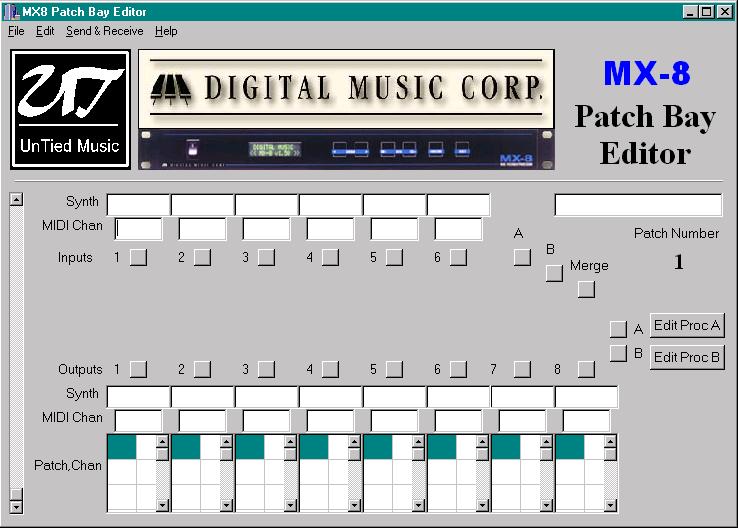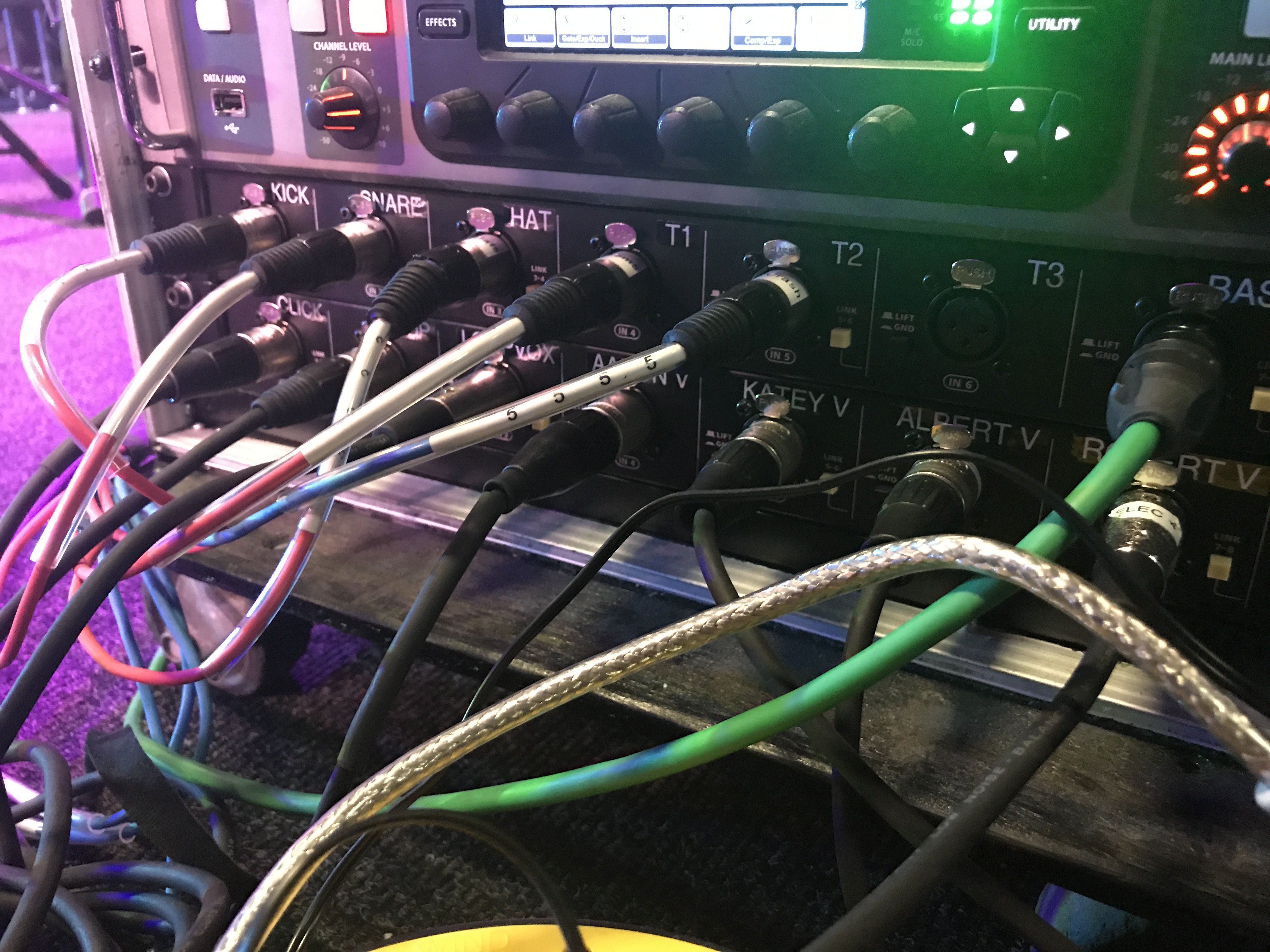

- Dmc mx8 midi patchbay drivers#
- Dmc mx8 midi patchbay driver#
- Dmc mx8 midi patchbay manual#
- Dmc mx8 midi patchbay full#
- Dmc mx8 midi patchbay mac#

Dmc mx8 midi patchbay drivers#
A handy feature allows propagation of these settings to all associated drivers once they are set up, they can then be pretty much ignored.
Dmc mx8 midi patchbay driver#
Once installed, you have to give each driver some information about the synth - such as its channel, MIDI In/Out ports, and patchbay program change. This prevents any one driver from becoming too large and complex and allows you to home in on exactly what you wish to edit. As an example, there are seven separate options for the Korg 03R/W, ranging from individual patches, to drums, combis, global, All Data, and so on. MIDIQuest knows about instruments via their drivers - many of which are split into several parts according to function. Sadly, the patchbay doesn't revert to a 'play mode' program change after receiving SysEx from a synth, meaning that if you wish to audition sounds via your keyboard, you need to switch the patchbay manually afterwards. Alternatively, there is MIDI patchbay support which, if you have a MIDI patchbay, saves all that messing about with cables. Usefully, the program supports multiple MIDI ports, so you might want to hard‑wire the connections needed to get SysEx to and from your synths. Additionally, there are options to play sequences, chords, and so on, all of which are handy when you want to hear your edits in some kind of musical context. The program uses the right mouse button to audition notes, with the convention of left/right movement to vary pitch and up/down to alter velocity. After adding drivers for my collection of synths, I proceeded to grab hold of some data so that I could give it a good tweaking. Alas, this function appears to be restricted to the Amiga version.įortunately, there is far more to MIDIQuest than mere looks. Strangely, the use of colour made things worse rather than better, giving a rather tacky appearance overall, and I found it irritating that I couldn't override any of the defaults. The editor screens were untidy, and some of the sliders very small and fiddly, whilst the larger ones reminded me of certain tired old DOS programs. Installation was quite painless, as was the addition of instrument drivers, and I was very quickly in and mousing around.įirst impressions are important, and I have to say that I was disappointed by the general look of the program.
Dmc mx8 midi patchbay manual#
Both manual and on‑line texts lacked an index, which made some things hard to trace - for example, it took me some time to find the setting for MIDI Patchbay delay (it's under Utilities, option 'Default Parms Windows', if you're interested). After a few days' use, I found myself referring to the on‑line help instead which, although not context‑sensitive, was nevertheless welcome. MIDIQuest and its instrument drivers are supplied on two 3.5‑inch 1.4Mb disks with a 60‑page manual, which is adequate, if not exactly brimming with detail. You need a MIDI interface too, naturally).
Dmc mx8 midi patchbay full#
(See box for full list.) It is the Windows 3.1 version that we're looking at here, but most of the features apply to all platforms (the program will work on any PC capable of running Windows 3.1 but, of course, runs better on bigger machines with oodles of RAM.
Dmc mx8 midi patchbay mac#
is just such a 'front end', and is available for DOS, Windows, Atari, Amiga and Mac formats, providing a universal editor, database and librarian for 160 instruments, effects units and other MIDI doobries. Don't you think you might be tempted to create a few sounds of your own if you could only grab hold of some knobs and sliders? MIDIQuest version 4 from Sound Quest Inc.

Imagine if there were a way to access all your instruments via a common, friendly interface, one which remained constant even as synths came and went in your setup. With a whole rack of single‑unit modules, each with a tiny LCD and, perhaps, a dozen or less buttons, you can find yourself spending a lot of time learning the programming styles of a number of manufacturers and scrolling through zillions of subtly different pages by prodding a button the size of a gnat's kneecap. But what if you have more than one synth - surely it's going to cost a fortune to buy an editor for each? Not necessarily, as Paul Nagle finds out.Īs synths grow more complex, paradoxically they seem to grow smaller and less accessible. A synth editor program for your computer can expand your synthesis horizons and encourage you to discard those presets in favour of original creations.


 0 kommentar(er)
0 kommentar(er)
